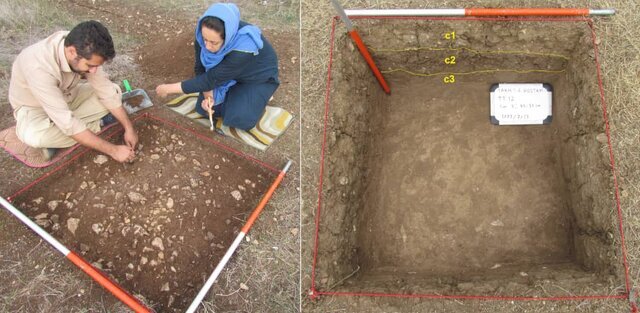Tehran-Round of Iranian paleontological studies reveals important evidence of the Caspian coastline for 31,000 years, suggesting that the oceans once stretched far more than their current boundaries.
The discovery took place at the Takht-e Rostam Archaeological Site in Neka County, Mazandaran, northern Iran.
Takht-e Rostam, a Paleolithic site, is located along the main road between Sari, the Providential Capital and Neka. Known for its unique geological features, including limestone formations and flint stones, the site has long been attracting its population. Archaeological research shows that it was one of the major human settlements of the Paleolithic period and served as a workshop for the production of stone tools and hunting equipment.
Dr. Homayon Koshravang, who studied geological sediments at the site several years ago, revealed that the area contains sediments dating back two million years from the Caspian Sea. This not only makes the site important to historical research findings, but also has value as a natural heritage site, ISNA reported Friday.
In an important breakthrough, the researchers concluded that about 31,000 years ago the southeast coastline of the Caspian Sea was much closer to the Takht-e Rostam site. Dates for these findings were carried out using photoluminescence dating methods conducted by the Institute of Geophysics at the University of Tehran, marking milestones in interdisciplinary research based on local scientific expertise, the report says.

Further excavations at Takht-e Rostam’s Paleolithic site, led by archaeologist Hossain Ramadanpur, discovered over 2,600 stone tools, providing deeper insight into the activity of the area’s early population. Evidence suggests that the site is not only a tool-making workshop, but also plays an important role in hunting strategies, allowing human groups to effectively monitor and control the surrounding environment.
These groundbreaking findings provided the first encounters of Paleolithic human settlements in the region and were published in the Iranian Journal of Archaeia Research, an international journal dedicated to archaeological research.
Takht-e Rostam has been registered as Iran’s national heritage based on registration number 5435 since March 2002, further cementing its importance in understanding ancient human history.
This discovery highlights the important role that the Caspian Sea played in shaping human activities thousands of years ago, and provides new insights into the relationship between early human society and its environment.
Immered in vibrant history, Mazandaran (also known as Tabarestan) was a cradle of civilization since the beginning of the first millennium in BC. According to the Encyclopedia of Britannica, it was almost overrun around AD 720 by the Arab Raiders.
morning

